-
EXECUTIVE SUMMARY
-
Market Overview
-
Key Findings
-
Market Segmentation
-
Competitive Landscape
-
Challenges and Opportunities
-
Future Outlook
-
MARKET INTRODUCTION
-
Definition
-
Scope of the study
-
Research Objective
-
Assumption
-
Limitations
-
RESEARCH METHODOLOGY
-
Overview
-
Data Mining
-
Secondary Research
-
Primary Research
-
Primary Interviews and Information Gathering Process
-
Breakdown of Primary Respondents
-
Forecasting Model
-
Market Size Estimation
-
Bottom-Up Approach
-
Top-Down Approach
-
Data Triangulation
-
Validation
-
MARKET DYNAMICS
-
Overview
-
Drivers
-
Restraints
-
Opportunities
-
MARKET FACTOR ANALYSIS
-
Value chain Analysis
-
Porter's Five Forces Analysis
-
Bargaining Power of Suppliers
-
Bargaining Power of Buyers
-
Threat of New Entrants
-
Threat of Substitutes
-
Intensity of Rivalry
-
COVID-19 Impact Analysis
-
Market Impact Analysis
-
Regional Impact
-
Opportunity and Threat Analysis
-
Fortified Foods Market, BY Product Type (USD Billion)
-
Fortified Dairy Products
-
Fortified Cereals
-
Fortified Beverages
-
Fortified Snacks
-
Fortified Foods Market, BY Nutritional Benefit (USD Billion)
-
Vitamins
-
Minerals
-
Protein
-
Fiber
-
Fortified Foods Market, BY End User (USD Billion)
-
Infants
-
Children
-
Adults
-
Elderly
-
Fortified Foods Market, BY Distribution Channel (USD Billion)
-
Supermarkets
-
Online Retail
-
Convenience Stores
-
Health Food Stores
-
Fortified Foods Market, BY Regional (USD Billion)
-
North America
-
US
-
Canada
-
Europe
-
Germany
-
UK
-
France
-
Russia
-
Italy
-
Spain
-
Rest of Europe
-
APAC
-
China
-
India
-
Japan
-
South Korea
-
Malaysia
-
Thailand
-
Indonesia
-
Rest of APAC
-
South America
-
Brazil
-
Mexico
-
Argentina
-
Rest of South America
-
MEA
-
GCC Countries
-
South Africa
-
Rest of MEA
-
Competitive Landscape
-
Overview
-
Competitive Analysis
-
Market share Analysis
-
Major Growth Strategy in the Fortified Foods Market
-
Competitive Benchmarking
-
Leading Players in Terms of Number of Developments in the Fortified Foods Market
-
Key developments and growth strategies
-
New Product Launch/Service Deployment
-
Merger & Acquisitions
-
Joint Ventures
-
Major Players Financial Matrix
-
Sales and Operating Income
-
Major Players R&D Expenditure. 2023
-
Company Profiles
-
Kraft Heinz
-
Financial Overview
-
Products Offered
-
Key Developments
-
SWOT Analysis
-
Key Strategies
-
Abbott Laboratories
-
Financial Overview
-
Products Offered
-
Key Developments
-
SWOT Analysis
-
Key Strategies
-
Danone
-
Financial Overview
-
Products Offered
-
Key Developments
-
SWOT Analysis
-
Key Strategies
-
Archer Daniels Midland
-
Financial Overview
-
Products Offered
-
Key Developments
-
SWOT Analysis
-
Key Strategies
-
Unilever
-
Financial Overview
-
Products Offered
-
Key Developments
-
SWOT Analysis
-
Key Strategies
-
Cargill
-
Financial Overview
-
Products Offered
-
Key Developments
-
SWOT Analysis
-
Key Strategies
-
Reckitt Benckiser
-
Financial Overview
-
Products Offered
-
Key Developments
-
SWOT Analysis
-
Key Strategies
-
Nestle
-
Financial Overview
-
Products Offered
-
Key Developments
-
SWOT Analysis
-
Key Strategies
-
PepsiCo
-
Financial Overview
-
Products Offered
-
Key Developments
-
SWOT Analysis
-
Key Strategies
-
Herbalife
-
Financial Overview
-
Products Offered
-
Key Developments
-
SWOT Analysis
-
Key Strategies
-
BASF
-
Financial Overview
-
Products Offered
-
Key Developments
-
SWOT Analysis
-
Key Strategies
-
HoffmannLa Roche
-
Financial Overview
-
Products Offered
-
Key Developments
-
SWOT Analysis
-
Key Strategies
-
Ajinomoto
-
Financial Overview
-
Products Offered
-
Key Developments
-
SWOT Analysis
-
Key Strategies
-
General Mills
-
Financial Overview
-
Products Offered
-
Key Developments
-
SWOT Analysis
-
Key Strategies
-
Kellogg's
-
Financial Overview
-
Products Offered
-
Key Developments
-
SWOT Analysis
-
Key Strategies
-
Appendix
-
References
-
Related Reports
-
LIST Of tables
-
LIST OF ASSUMPTIONS
-
North America Fortified Foods Market SIZE ESTIMATES & FORECAST, BY PRODUCT TYPE, 2019-2035 (USD Billions)
-
North America Fortified Foods Market SIZE ESTIMATES & FORECAST, BY NUTRITIONAL BENEFIT, 2019-2035 (USD Billions)
-
North America Fortified Foods Market SIZE ESTIMATES & FORECAST, BY END USER, 2019-2035 (USD Billions)
-
North America Fortified Foods Market SIZE ESTIMATES & FORECAST, BY DISTRIBUTION CHANNEL, 2019-2035 (USD Billions)
-
North America Fortified Foods Market SIZE ESTIMATES & FORECAST, BY REGIONAL, 2019-2035 (USD Billions)
-
US Fortified Foods Market SIZE ESTIMATES & FORECAST, BY PRODUCT TYPE, 2019-2035 (USD Billions)
-
US Fortified Foods Market SIZE ESTIMATES & FORECAST, BY NUTRITIONAL BENEFIT, 2019-2035 (USD Billions)
-
US Fortified Foods Market SIZE ESTIMATES & FORECAST, BY END USER, 2019-2035 (USD Billions)
-
US Fortified Foods Market SIZE ESTIMATES & FORECAST, BY DISTRIBUTION CHANNEL, 2019-2035 (USD Billions)
-
US Fortified Foods Market SIZE ESTIMATES & FORECAST, BY REGIONAL, 2019-2035 (USD Billions)
-
Canada Fortified Foods Market SIZE ESTIMATES & FORECAST, BY PRODUCT TYPE, 2019-2035 (USD Billions)
-
Canada Fortified Foods Market SIZE ESTIMATES & FORECAST, BY NUTRITIONAL BENEFIT, 2019-2035 (USD Billions)
-
Canada Fortified Foods Market SIZE ESTIMATES & FORECAST, BY END USER, 2019-2035 (USD Billions)
-
Canada Fortified Foods Market SIZE ESTIMATES & FORECAST, BY DISTRIBUTION CHANNEL, 2019-2035 (USD Billions)
-
Canada Fortified Foods Market SIZE ESTIMATES & FORECAST, BY REGIONAL, 2019-2035 (USD Billions)
-
Europe Fortified Foods Market SIZE ESTIMATES & FORECAST, BY PRODUCT TYPE, 2019-2035 (USD Billions)
-
Europe Fortified Foods Market SIZE ESTIMATES & FORECAST, BY NUTRITIONAL BENEFIT, 2019-2035 (USD Billions)
-
Europe Fortified Foods Market SIZE ESTIMATES & FORECAST, BY END USER, 2019-2035 (USD Billions)
-
Europe Fortified Foods Market SIZE ESTIMATES & FORECAST, BY DISTRIBUTION CHANNEL, 2019-2035 (USD Billions)
-
Europe Fortified Foods Market SIZE ESTIMATES & FORECAST, BY REGIONAL, 2019-2035 (USD Billions)
-
Germany Fortified Foods Market SIZE ESTIMATES & FORECAST, BY PRODUCT TYPE, 2019-2035 (USD Billions)
-
Germany Fortified Foods Market SIZE ESTIMATES & FORECAST, BY NUTRITIONAL BENEFIT, 2019-2035 (USD Billions)
-
Germany Fortified Foods Market SIZE ESTIMATES & FORECAST, BY END USER, 2019-2035 (USD Billions)
-
Germany Fortified Foods Market SIZE ESTIMATES & FORECAST, BY DISTRIBUTION CHANNEL, 2019-2035 (USD Billions)
-
Germany Fortified Foods Market SIZE ESTIMATES & FORECAST, BY REGIONAL, 2019-2035 (USD Billions)
-
UK Fortified Foods Market SIZE ESTIMATES & FORECAST, BY PRODUCT TYPE, 2019-2035 (USD Billions)
-
UK Fortified Foods Market SIZE ESTIMATES & FORECAST, BY NUTRITIONAL BENEFIT, 2019-2035 (USD Billions)
-
UK Fortified Foods Market SIZE ESTIMATES & FORECAST, BY END USER, 2019-2035 (USD Billions)
-
UK Fortified Foods Market SIZE ESTIMATES & FORECAST, BY DISTRIBUTION CHANNEL, 2019-2035 (USD Billions)
-
UK Fortified Foods Market SIZE ESTIMATES & FORECAST, BY REGIONAL, 2019-2035 (USD Billions)
-
France Fortified Foods Market SIZE ESTIMATES & FORECAST, BY PRODUCT TYPE, 2019-2035 (USD Billions)
-
France Fortified Foods Market SIZE ESTIMATES & FORECAST, BY NUTRITIONAL BENEFIT, 2019-2035 (USD Billions)
-
France Fortified Foods Market SIZE ESTIMATES & FORECAST, BY END USER, 2019-2035 (USD Billions)
-
France Fortified Foods Market SIZE ESTIMATES & FORECAST, BY DISTRIBUTION CHANNEL, 2019-2035 (USD Billions)
-
France Fortified Foods Market SIZE ESTIMATES & FORECAST, BY REGIONAL, 2019-2035 (USD Billions)
-
Russia Fortified Foods Market SIZE ESTIMATES & FORECAST, BY PRODUCT TYPE, 2019-2035 (USD Billions)
-
Russia Fortified Foods Market SIZE ESTIMATES & FORECAST, BY NUTRITIONAL BENEFIT, 2019-2035 (USD Billions)
-
Russia Fortified Foods Market SIZE ESTIMATES & FORECAST, BY END USER, 2019-2035 (USD Billions)
-
Russia Fortified Foods Market SIZE ESTIMATES & FORECAST, BY DISTRIBUTION CHANNEL, 2019-2035 (USD Billions)
-
Russia Fortified Foods Market SIZE ESTIMATES & FORECAST, BY REGIONAL, 2019-2035 (USD Billions)
-
Italy Fortified Foods Market SIZE ESTIMATES & FORECAST, BY PRODUCT TYPE, 2019-2035 (USD Billions)
-
Italy Fortified Foods Market SIZE ESTIMATES & FORECAST, BY NUTRITIONAL BENEFIT, 2019-2035 (USD Billions)
-
Italy Fortified Foods Market SIZE ESTIMATES & FORECAST, BY END USER, 2019-2035 (USD Billions)
-
Italy Fortified Foods Market SIZE ESTIMATES & FORECAST, BY DISTRIBUTION CHANNEL, 2019-2035 (USD Billions)
-
Italy Fortified Foods Market SIZE ESTIMATES & FORECAST, BY REGIONAL, 2019-2035 (USD Billions)
-
Spain Fortified Foods Market SIZE ESTIMATES & FORECAST, BY PRODUCT TYPE, 2019-2035 (USD Billions)
-
Spain Fortified Foods Market SIZE ESTIMATES & FORECAST, BY NUTRITIONAL BENEFIT, 2019-2035 (USD Billions)
-
Spain Fortified Foods Market SIZE ESTIMATES & FORECAST, BY END USER, 2019-2035 (USD Billions)
-
Spain Fortified Foods Market SIZE ESTIMATES & FORECAST, BY DISTRIBUTION CHANNEL, 2019-2035 (USD Billions)
-
Spain Fortified Foods Market SIZE ESTIMATES & FORECAST, BY REGIONAL, 2019-2035 (USD Billions)
-
Rest of Europe Fortified Foods Market SIZE ESTIMATES & FORECAST, BY PRODUCT TYPE, 2019-2035 (USD Billions)
-
Rest of Europe Fortified Foods Market SIZE ESTIMATES & FORECAST, BY NUTRITIONAL BENEFIT, 2019-2035 (USD Billions)
-
Rest of Europe Fortified Foods Market SIZE ESTIMATES & FORECAST, BY END USER, 2019-2035 (USD Billions)
-
Rest of Europe Fortified Foods Market SIZE ESTIMATES & FORECAST, BY DISTRIBUTION CHANNEL, 2019-2035 (USD Billions)
-
Rest of Europe Fortified Foods Market SIZE ESTIMATES & FORECAST, BY REGIONAL, 2019-2035 (USD Billions)
-
APAC Fortified Foods Market SIZE ESTIMATES & FORECAST, BY PRODUCT TYPE, 2019-2035 (USD Billions)
-
APAC Fortified Foods Market SIZE ESTIMATES & FORECAST, BY NUTRITIONAL BENEFIT, 2019-2035 (USD Billions)
-
APAC Fortified Foods Market SIZE ESTIMATES & FORECAST, BY END USER, 2019-2035 (USD Billions)
-
APAC Fortified Foods Market SIZE ESTIMATES & FORECAST, BY DISTRIBUTION CHANNEL, 2019-2035 (USD Billions)
-
APAC Fortified Foods Market SIZE ESTIMATES & FORECAST, BY REGIONAL, 2019-2035 (USD Billions)
-
China Fortified Foods Market SIZE ESTIMATES & FORECAST, BY PRODUCT TYPE, 2019-2035 (USD Billions)
-
China Fortified Foods Market SIZE ESTIMATES & FORECAST, BY NUTRITIONAL BENEFIT, 2019-2035 (USD Billions)
-
China Fortified Foods Market SIZE ESTIMATES & FORECAST, BY END USER, 2019-2035 (USD Billions)
-
China Fortified Foods Market SIZE ESTIMATES & FORECAST, BY DISTRIBUTION CHANNEL, 2019-2035 (USD Billions)
-
China Fortified Foods Market SIZE ESTIMATES & FORECAST, BY REGIONAL, 2019-2035 (USD Billions)
-
India Fortified Foods Market SIZE ESTIMATES & FORECAST, BY PRODUCT TYPE, 2019-2035 (USD Billions)
-
India Fortified Foods Market SIZE ESTIMATES & FORECAST, BY NUTRITIONAL BENEFIT, 2019-2035 (USD Billions)
-
India Fortified Foods Market SIZE ESTIMATES & FORECAST, BY END USER, 2019-2035 (USD Billions)
-
India Fortified Foods Market SIZE ESTIMATES & FORECAST, BY DISTRIBUTION CHANNEL, 2019-2035 (USD Billions)
-
India Fortified Foods Market SIZE ESTIMATES & FORECAST, BY REGIONAL, 2019-2035 (USD Billions)
-
Japan Fortified Foods Market SIZE ESTIMATES & FORECAST, BY PRODUCT TYPE, 2019-2035 (USD Billions)
-
Japan Fortified Foods Market SIZE ESTIMATES & FORECAST, BY NUTRITIONAL BENEFIT, 2019-2035 (USD Billions)
-
Japan Fortified Foods Market SIZE ESTIMATES & FORECAST, BY END USER, 2019-2035 (USD Billions)
-
Japan Fortified Foods Market SIZE ESTIMATES & FORECAST, BY DISTRIBUTION CHANNEL, 2019-2035 (USD Billions)
-
Japan Fortified Foods Market SIZE ESTIMATES & FORECAST, BY REGIONAL, 2019-2035 (USD Billions)
-
South Korea Fortified Foods Market SIZE ESTIMATES & FORECAST, BY PRODUCT TYPE, 2019-2035 (USD Billions)
-
South Korea Fortified Foods Market SIZE ESTIMATES & FORECAST, BY NUTRITIONAL BENEFIT, 2019-2035 (USD Billions)
-
South Korea Fortified Foods Market SIZE ESTIMATES & FORECAST, BY END USER, 2019-2035 (USD Billions)
-
South Korea Fortified Foods Market SIZE ESTIMATES & FORECAST, BY DISTRIBUTION CHANNEL, 2019-2035 (USD Billions)
-
South Korea Fortified Foods Market SIZE ESTIMATES & FORECAST, BY REGIONAL, 2019-2035 (USD Billions)
-
Malaysia Fortified Foods Market SIZE ESTIMATES & FORECAST, BY PRODUCT TYPE, 2019-2035 (USD Billions)
-
Malaysia Fortified Foods Market SIZE ESTIMATES & FORECAST, BY NUTRITIONAL BENEFIT, 2019-2035 (USD Billions)
-
Malaysia Fortified Foods Market SIZE ESTIMATES & FORECAST, BY END USER, 2019-2035 (USD Billions)
-
Malaysia Fortified Foods Market SIZE ESTIMATES & FORECAST, BY DISTRIBUTION CHANNEL, 2019-2035 (USD Billions)
-
Malaysia Fortified Foods Market SIZE ESTIMATES & FORECAST, BY REGIONAL, 2019-2035 (USD Billions)
-
Thailand Fortified Foods Market SIZE ESTIMATES & FORECAST, BY PRODUCT TYPE, 2019-2035 (USD Billions)
-
Thailand Fortified Foods Market SIZE ESTIMATES & FORECAST, BY NUTRITIONAL BENEFIT, 2019-2035 (USD Billions)
-
Thailand Fortified Foods Market SIZE ESTIMATES & FORECAST, BY END USER, 2019-2035 (USD Billions)
-
Thailand Fortified Foods Market SIZE ESTIMATES & FORECAST, BY DISTRIBUTION CHANNEL, 2019-2035 (USD Billions)
-
Thailand Fortified Foods Market SIZE ESTIMATES & FORECAST, BY REGIONAL, 2019-2035 (USD Billions)
-
Indonesia Fortified Foods Market SIZE ESTIMATES & FORECAST, BY PRODUCT TYPE, 2019-2035 (USD Billions)
-
Indonesia Fortified Foods Market SIZE ESTIMATES & FORECAST, BY NUTRITIONAL BENEFIT, 2019-2035 (USD Billions)
-
Indonesia Fortified Foods Market SIZE ESTIMATES & FORECAST, BY END USER, 2019-2035 (USD Billions)
-
Indonesia Fortified Foods Market SIZE ESTIMATES & FORECAST, BY DISTRIBUTION CHANNEL, 2019-2035 (USD Billions)
-
Indonesia Fortified Foods Market SIZE ESTIMATES & FORECAST, BY REGIONAL, 2019-2035 (USD Billions)
-
Rest of APAC Fortified Foods Market SIZE ESTIMATES & FORECAST, BY PRODUCT TYPE, 2019-2035 (USD Billions)
-
Rest of APAC Fortified Foods Market SIZE ESTIMATES & FORECAST, BY NUTRITIONAL BENEFIT, 2019-2035 (USD Billions)
-
Rest of APAC Fortified Foods Market SIZE ESTIMATES & FORECAST, BY END USER, 2019-2035 (USD Billions)
-
Rest of APAC Fortified Foods Market SIZE ESTIMATES & FORECAST, BY DISTRIBUTION CHANNEL, 2019-2035 (USD Billions)
-
Rest of APAC Fortified Foods Market SIZE ESTIMATES & FORECAST, BY REGIONAL, 2019-2035 (USD Billions)
-
South America Fortified Foods Market SIZE ESTIMATES & FORECAST, BY PRODUCT TYPE, 2019-2035 (USD Billions)
-
South America Fortified Foods Market SIZE ESTIMATES & FORECAST, BY NUTRITIONAL BENEFIT, 2019-2035 (USD Billions)
-
South America Fortified Foods Market SIZE ESTIMATES & FORECAST, BY END USER, 2019-2035 (USD Billions)
-
South America Fortified Foods Market SIZE ESTIMATES & FORECAST, BY DISTRIBUTION CHANNEL, 2019-2035 (USD Billions)
-
South America Fortified Foods Market SIZE ESTIMATES & FORECAST, BY REGIONAL, 2019-2035 (USD Billions)
-
Brazil Fortified Foods Market SIZE ESTIMATES & FORECAST, BY PRODUCT TYPE, 2019-2035 (USD Billions)
-
Brazil Fortified Foods Market SIZE ESTIMATES & FORECAST, BY NUTRITIONAL BENEFIT, 2019-2035 (USD Billions)
-
Brazil Fortified Foods Market SIZE ESTIMATES & FORECAST, BY END USER, 2019-2035 (USD Billions)
-
Brazil Fortified Foods Market SIZE ESTIMATES & FORECAST, BY DISTRIBUTION CHANNEL, 2019-2035 (USD Billions)
-
Brazil Fortified Foods Market SIZE ESTIMATES & FORECAST, BY REGIONAL, 2019-2035 (USD Billions)
-
Mexico Fortified Foods Market SIZE ESTIMATES & FORECAST, BY PRODUCT TYPE, 2019-2035 (USD Billions)
-
Mexico Fortified Foods Market SIZE ESTIMATES & FORECAST, BY NUTRITIONAL BENEFIT, 2019-2035 (USD Billions)
-
Mexico Fortified Foods Market SIZE ESTIMATES & FORECAST, BY END USER, 2019-2035 (USD Billions)
-
Mexico Fortified Foods Market SIZE ESTIMATES & FORECAST, BY DISTRIBUTION CHANNEL, 2019-2035 (USD Billions)
-
Mexico Fortified Foods Market SIZE ESTIMATES & FORECAST, BY REGIONAL, 2019-2035 (USD Billions)
-
Argentina Fortified Foods Market SIZE ESTIMATES & FORECAST, BY PRODUCT TYPE, 2019-2035 (USD Billions)
-
Argentina Fortified Foods Market SIZE ESTIMATES & FORECAST, BY NUTRITIONAL BENEFIT, 2019-2035 (USD Billions)
-
Argentina Fortified Foods Market SIZE ESTIMATES & FORECAST, BY END USER, 2019-2035 (USD Billions)
-
Argentina Fortified Foods Market SIZE ESTIMATES & FORECAST, BY DISTRIBUTION CHANNEL, 2019-2035 (USD Billions)
-
Argentina Fortified Foods Market SIZE ESTIMATES & FORECAST, BY REGIONAL, 2019-2035 (USD Billions)
-
Rest of South America Fortified Foods Market SIZE ESTIMATES & FORECAST, BY PRODUCT TYPE, 2019-2035 (USD Billions)
-
Rest of South America Fortified Foods Market SIZE ESTIMATES & FORECAST, BY NUTRITIONAL BENEFIT, 2019-2035 (USD Billions)
-
Rest of South America Fortified Foods Market SIZE ESTIMATES & FORECAST, BY END USER, 2019-2035 (USD Billions)
-
Rest of South America Fortified Foods Market SIZE ESTIMATES & FORECAST, BY DISTRIBUTION CHANNEL, 2019-2035 (USD Billions)
-
Rest of South America Fortified Foods Market SIZE ESTIMATES & FORECAST, BY REGIONAL, 2019-2035 (USD Billions)
-
MEA Fortified Foods Market SIZE ESTIMATES & FORECAST, BY PRODUCT TYPE, 2019-2035 (USD Billions)
-
MEA Fortified Foods Market SIZE ESTIMATES & FORECAST, BY NUTRITIONAL BENEFIT, 2019-2035 (USD Billions)
-
MEA Fortified Foods Market SIZE ESTIMATES & FORECAST, BY END USER, 2019-2035 (USD Billions)
-
MEA Fortified Foods Market SIZE ESTIMATES & FORECAST, BY DISTRIBUTION CHANNEL, 2019-2035 (USD Billions)
-
MEA Fortified Foods Market SIZE ESTIMATES & FORECAST, BY REGIONAL, 2019-2035 (USD Billions)
-
GCC Countries Fortified Foods Market SIZE ESTIMATES & FORECAST, BY PRODUCT TYPE, 2019-2035 (USD Billions)
-
GCC Countries Fortified Foods Market SIZE ESTIMATES & FORECAST, BY NUTRITIONAL BENEFIT, 2019-2035 (USD Billions)
-
GCC Countries Fortified Foods Market SIZE ESTIMATES & FORECAST, BY END USER, 2019-2035 (USD Billions)
-
GCC Countries Fortified Foods Market SIZE ESTIMATES & FORECAST, BY DISTRIBUTION CHANNEL, 2019-2035 (USD Billions)
-
GCC Countries Fortified Foods Market SIZE ESTIMATES & FORECAST, BY REGIONAL, 2019-2035 (USD Billions)
-
South Africa Fortified Foods Market SIZE ESTIMATES & FORECAST, BY PRODUCT TYPE, 2019-2035 (USD Billions)
-
South Africa Fortified Foods Market SIZE ESTIMATES & FORECAST, BY NUTRITIONAL BENEFIT, 2019-2035 (USD Billions)
-
South Africa Fortified Foods Market SIZE ESTIMATES & FORECAST, BY END USER, 2019-2035 (USD Billions)
-
South Africa Fortified Foods Market SIZE ESTIMATES & FORECAST, BY DISTRIBUTION CHANNEL, 2019-2035 (USD Billions)
-
South Africa Fortified Foods Market SIZE ESTIMATES & FORECAST, BY REGIONAL, 2019-2035 (USD Billions)
-
Rest of MEA Fortified Foods Market SIZE ESTIMATES & FORECAST, BY PRODUCT TYPE, 2019-2035 (USD Billions)
-
Rest of MEA Fortified Foods Market SIZE ESTIMATES & FORECAST, BY NUTRITIONAL BENEFIT, 2019-2035 (USD Billions)
-
Rest of MEA Fortified Foods Market SIZE ESTIMATES & FORECAST, BY END USER, 2019-2035 (USD Billions)
-
Rest of MEA Fortified Foods Market SIZE ESTIMATES & FORECAST, BY DISTRIBUTION CHANNEL, 2019-2035 (USD Billions)
-
Rest of MEA Fortified Foods Market SIZE ESTIMATES & FORECAST, BY REGIONAL, 2019-2035 (USD Billions)
-
PRODUCT LAUNCH/PRODUCT DEVELOPMENT/APPROVAL
-
ACQUISITION/PARTNERSHIP
-
LIST Of figures
-
MARKET SYNOPSIS
-
NORTH AMERICA FORTIFIED FOODS MARKET ANALYSIS
-
US FORTIFIED FOODS MARKET ANALYSIS BY PRODUCT TYPE
-
US FORTIFIED FOODS MARKET ANALYSIS BY NUTRITIONAL BENEFIT
-
US FORTIFIED FOODS MARKET ANALYSIS BY END USER
-
US FORTIFIED FOODS MARKET ANALYSIS BY DISTRIBUTION CHANNEL
-
US FORTIFIED FOODS MARKET ANALYSIS BY REGIONAL
-
CANADA FORTIFIED FOODS MARKET ANALYSIS BY PRODUCT TYPE
-
CANADA FORTIFIED FOODS MARKET ANALYSIS BY NUTRITIONAL BENEFIT
-
CANADA FORTIFIED FOODS MARKET ANALYSIS BY END USER
-
CANADA FORTIFIED FOODS MARKET ANALYSIS BY DISTRIBUTION CHANNEL
-
CANADA FORTIFIED FOODS MARKET ANALYSIS BY REGIONAL
-
EUROPE FORTIFIED FOODS MARKET ANALYSIS
-
GERMANY FORTIFIED FOODS MARKET ANALYSIS BY PRODUCT TYPE
-
GERMANY FORTIFIED FOODS MARKET ANALYSIS BY NUTRITIONAL BENEFIT
-
GERMANY FORTIFIED FOODS MARKET ANALYSIS BY END USER
-
GERMANY FORTIFIED FOODS MARKET ANALYSIS BY DISTRIBUTION CHANNEL
-
GERMANY FORTIFIED FOODS MARKET ANALYSIS BY REGIONAL
-
UK FORTIFIED FOODS MARKET ANALYSIS BY PRODUCT TYPE
-
UK FORTIFIED FOODS MARKET ANALYSIS BY NUTRITIONAL BENEFIT
-
UK FORTIFIED FOODS MARKET ANALYSIS BY END USER
-
UK FORTIFIED FOODS MARKET ANALYSIS BY DISTRIBUTION CHANNEL
-
UK FORTIFIED FOODS MARKET ANALYSIS BY REGIONAL
-
FRANCE FORTIFIED FOODS MARKET ANALYSIS BY PRODUCT TYPE
-
FRANCE FORTIFIED FOODS MARKET ANALYSIS BY NUTRITIONAL BENEFIT
-
FRANCE FORTIFIED FOODS MARKET ANALYSIS BY END USER
-
FRANCE FORTIFIED FOODS MARKET ANALYSIS BY DISTRIBUTION CHANNEL
-
FRANCE FORTIFIED FOODS MARKET ANALYSIS BY REGIONAL
-
RUSSIA FORTIFIED FOODS MARKET ANALYSIS BY PRODUCT TYPE
-
RUSSIA FORTIFIED FOODS MARKET ANALYSIS BY NUTRITIONAL BENEFIT
-
RUSSIA FORTIFIED FOODS MARKET ANALYSIS BY END USER
-
RUSSIA FORTIFIED FOODS MARKET ANALYSIS BY DISTRIBUTION CHANNEL
-
RUSSIA FORTIFIED FOODS MARKET ANALYSIS BY REGIONAL
-
ITALY FORTIFIED FOODS MARKET ANALYSIS BY PRODUCT TYPE
-
ITALY FORTIFIED FOODS MARKET ANALYSIS BY NUTRITIONAL BENEFIT
-
ITALY FORTIFIED FOODS MARKET ANALYSIS BY END USER
-
ITALY FORTIFIED FOODS MARKET ANALYSIS BY DISTRIBUTION CHANNEL
-
ITALY FORTIFIED FOODS MARKET ANALYSIS BY REGIONAL
-
SPAIN FORTIFIED FOODS MARKET ANALYSIS BY PRODUCT TYPE
-
SPAIN FORTIFIED FOODS MARKET ANALYSIS BY NUTRITIONAL BENEFIT
-
SPAIN FORTIFIED FOODS MARKET ANALYSIS BY END USER
-
SPAIN FORTIFIED FOODS MARKET ANALYSIS BY DISTRIBUTION CHANNEL
-
SPAIN FORTIFIED FOODS MARKET ANALYSIS BY REGIONAL
-
REST OF EUROPE FORTIFIED FOODS MARKET ANALYSIS BY PRODUCT TYPE
-
REST OF EUROPE FORTIFIED FOODS MARKET ANALYSIS BY NUTRITIONAL BENEFIT
-
REST OF EUROPE FORTIFIED FOODS MARKET ANALYSIS BY END USER
-
REST OF EUROPE FORTIFIED FOODS MARKET ANALYSIS BY DISTRIBUTION CHANNEL
-
REST OF EUROPE FORTIFIED FOODS MARKET ANALYSIS BY REGIONAL
-
APAC FORTIFIED FOODS MARKET ANALYSIS
-
CHINA FORTIFIED FOODS MARKET ANALYSIS BY PRODUCT TYPE
-
CHINA FORTIFIED FOODS MARKET ANALYSIS BY NUTRITIONAL BENEFIT
-
CHINA FORTIFIED FOODS MARKET ANALYSIS BY END USER
-
CHINA FORTIFIED FOODS MARKET ANALYSIS BY DISTRIBUTION CHANNEL
-
CHINA FORTIFIED FOODS MARKET ANALYSIS BY REGIONAL
-
INDIA FORTIFIED FOODS MARKET ANALYSIS BY PRODUCT TYPE
-
INDIA FORTIFIED FOODS MARKET ANALYSIS BY NUTRITIONAL BENEFIT
-
INDIA FORTIFIED FOODS MARKET ANALYSIS BY END USER
-
INDIA FORTIFIED FOODS MARKET ANALYSIS BY DISTRIBUTION CHANNEL
-
INDIA FORTIFIED FOODS MARKET ANALYSIS BY REGIONAL
-
JAPAN FORTIFIED FOODS MARKET ANALYSIS BY PRODUCT TYPE
-
JAPAN FORTIFIED FOODS MARKET ANALYSIS BY NUTRITIONAL BENEFIT
-
JAPAN FORTIFIED FOODS MARKET ANALYSIS BY END USER
-
JAPAN FORTIFIED FOODS MARKET ANALYSIS BY DISTRIBUTION CHANNEL
-
JAPAN FORTIFIED FOODS MARKET ANALYSIS BY REGIONAL
-
SOUTH KOREA FORTIFIED FOODS MARKET ANALYSIS BY PRODUCT TYPE
-
SOUTH KOREA FORTIFIED FOODS MARKET ANALYSIS BY NUTRITIONAL BENEFIT
-
SOUTH KOREA FORTIFIED FOODS MARKET ANALYSIS BY END USER
-
SOUTH KOREA FORTIFIED FOODS MARKET ANALYSIS BY DISTRIBUTION CHANNEL
-
SOUTH KOREA FORTIFIED FOODS MARKET ANALYSIS BY REGIONAL
-
MALAYSIA FORTIFIED FOODS MARKET ANALYSIS BY PRODUCT TYPE
-
MALAYSIA FORTIFIED FOODS MARKET ANALYSIS BY NUTRITIONAL BENEFIT
-
MALAYSIA FORTIFIED FOODS MARKET ANALYSIS BY END USER
-
MALAYSIA FORTIFIED FOODS MARKET ANALYSIS BY DISTRIBUTION CHANNEL
-
MALAYSIA FORTIFIED FOODS MARKET ANALYSIS BY REGIONAL
-
THAILAND FORTIFIED FOODS MARKET ANALYSIS BY PRODUCT TYPE
-
THAILAND FORTIFIED FOODS MARKET ANALYSIS BY NUTRITIONAL BENEFIT
-
THAILAND FORTIFIED FOODS MARKET ANALYSIS BY END USER
-
THAILAND FORTIFIED FOODS MARKET ANALYSIS BY DISTRIBUTION CHANNEL
-
THAILAND FORTIFIED FOODS MARKET ANALYSIS BY REGIONAL
-
INDONESIA FORTIFIED FOODS MARKET ANALYSIS BY PRODUCT TYPE
-
INDONESIA FORTIFIED FOODS MARKET ANALYSIS BY NUTRITIONAL BENEFIT
-
INDONESIA FORTIFIED FOODS MARKET ANALYSIS BY END USER
-
INDONESIA FORTIFIED FOODS MARKET ANALYSIS BY DISTRIBUTION CHANNEL
-
INDONESIA FORTIFIED FOODS MARKET ANALYSIS BY REGIONAL
-
REST OF APAC FORTIFIED FOODS MARKET ANALYSIS BY PRODUCT TYPE
-
REST OF APAC FORTIFIED FOODS MARKET ANALYSIS BY NUTRITIONAL BENEFIT
-
REST OF APAC FORTIFIED FOODS MARKET ANALYSIS BY END USER
-
REST OF APAC FORTIFIED FOODS MARKET ANALYSIS BY DISTRIBUTION CHANNEL
-
REST OF APAC FORTIFIED FOODS MARKET ANALYSIS BY REGIONAL
-
SOUTH AMERICA FORTIFIED FOODS MARKET ANALYSIS
-
BRAZIL FORTIFIED FOODS MARKET ANALYSIS BY PRODUCT TYPE
-
BRAZIL FORTIFIED FOODS MARKET ANALYSIS BY NUTRITIONAL BENEFIT
-
BRAZIL FORTIFIED FOODS MARKET ANALYSIS BY END USER
-
BRAZIL FORTIFIED FOODS MARKET ANALYSIS BY DISTRIBUTION CHANNEL
-
BRAZIL FORTIFIED FOODS MARKET ANALYSIS BY REGIONAL
-
MEXICO FORTIFIED FOODS MARKET ANALYSIS BY PRODUCT TYPE
-
MEXICO FORTIFIED FOODS MARKET ANALYSIS BY NUTRITIONAL BENEFIT
-
MEXICO FORTIFIED FOODS MARKET ANALYSIS BY END USER
-
MEXICO FORTIFIED FOODS MARKET ANALYSIS BY DISTRIBUTION CHANNEL
-
MEXICO FORTIFIED FOODS MARKET ANALYSIS BY REGIONAL
-
ARGENTINA FORTIFIED FOODS MARKET ANALYSIS BY PRODUCT TYPE
-
ARGENTINA FORTIFIED FOODS MARKET ANALYSIS BY NUTRITIONAL BENEFIT
-
ARGENTINA FORTIFIED FOODS MARKET ANALYSIS BY END USER
-
ARGENTINA FORTIFIED FOODS MARKET ANALYSIS BY DISTRIBUTION CHANNEL
-
ARGENTINA FORTIFIED FOODS MARKET ANALYSIS BY REGIONAL
-
REST OF SOUTH AMERICA FORTIFIED FOODS MARKET ANALYSIS BY PRODUCT TYPE
-
REST OF SOUTH AMERICA FORTIFIED FOODS MARKET ANALYSIS BY NUTRITIONAL BENEFIT
-
REST OF SOUTH AMERICA FORTIFIED FOODS MARKET ANALYSIS BY END USER
-
REST OF SOUTH AMERICA FORTIFIED FOODS MARKET ANALYSIS BY DISTRIBUTION CHANNEL
-
REST OF SOUTH AMERICA FORTIFIED FOODS MARKET ANALYSIS BY REGIONAL
-
MEA FORTIFIED FOODS MARKET ANALYSIS
-
GCC COUNTRIES FORTIFIED FOODS MARKET ANALYSIS BY PRODUCT TYPE
-
GCC COUNTRIES FORTIFIED FOODS MARKET ANALYSIS BY NUTRITIONAL BENEFIT
-
GCC COUNTRIES FORTIFIED FOODS MARKET ANALYSIS BY END USER
-
GCC COUNTRIES FORTIFIED FOODS MARKET ANALYSIS BY DISTRIBUTION CHANNEL
-
GCC COUNTRIES FORTIFIED FOODS MARKET ANALYSIS BY REGIONAL
-
SOUTH AFRICA FORTIFIED FOODS MARKET ANALYSIS BY PRODUCT TYPE
-
SOUTH AFRICA FORTIFIED FOODS MARKET ANALYSIS BY NUTRITIONAL BENEFIT
-
SOUTH AFRICA FORTIFIED FOODS MARKET ANALYSIS BY END USER
-
SOUTH AFRICA FORTIFIED FOODS MARKET ANALYSIS BY DISTRIBUTION CHANNEL
-
SOUTH AFRICA FORTIFIED FOODS MARKET ANALYSIS BY REGIONAL
-
REST OF MEA FORTIFIED FOODS MARKET ANALYSIS BY PRODUCT TYPE
-
REST OF MEA FORTIFIED FOODS MARKET ANALYSIS BY NUTRITIONAL BENEFIT
-
REST OF MEA FORTIFIED FOODS MARKET ANALYSIS BY END USER
-
REST OF MEA FORTIFIED FOODS MARKET ANALYSIS BY DISTRIBUTION CHANNEL
-
REST OF MEA FORTIFIED FOODS MARKET ANALYSIS BY REGIONAL
-
KEY BUYING CRITERIA OF FORTIFIED FOODS MARKET
-
RESEARCH PROCESS OF MRFR
-
DRO ANALYSIS OF FORTIFIED FOODS MARKET
-
DRIVERS IMPACT ANALYSIS: FORTIFIED FOODS MARKET
-
RESTRAINTS IMPACT ANALYSIS: FORTIFIED FOODS MARKET
-
SUPPLY / VALUE CHAIN: FORTIFIED FOODS MARKET
-
FORTIFIED FOODS MARKET, BY PRODUCT TYPE, 2025 (% SHARE)
-
FORTIFIED FOODS MARKET, BY PRODUCT TYPE, 2019 TO 2035 (USD Billions)
-
FORTIFIED FOODS MARKET, BY NUTRITIONAL BENEFIT, 2025 (% SHARE)
-
FORTIFIED FOODS MARKET, BY NUTRITIONAL BENEFIT, 2019 TO 2035 (USD Billions)
-
FORTIFIED FOODS MARKET, BY END USER, 2025 (% SHARE)
-
FORTIFIED FOODS MARKET, BY END USER, 2019 TO 2035 (USD Billions)
-
FORTIFIED FOODS MARKET, BY DISTRIBUTION CHANNEL, 2025 (% SHARE)
-
FORTIFIED FOODS MARKET, BY DISTRIBUTION CHANNEL, 2019 TO 2035 (USD Billions)
-
FORTIFIED FOODS MARKET, BY REGIONAL, 2025 (% SHARE)
-
FORTIFIED FOODS MARKET, BY REGIONAL, 2019 TO 2035 (USD Billions)
-
BENCHMARKING OF MAJOR COMPETITORS

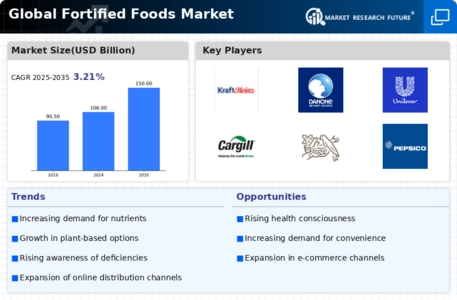
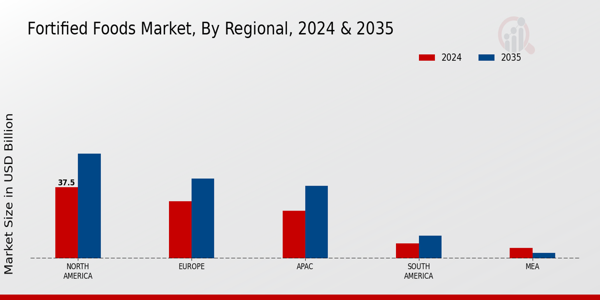

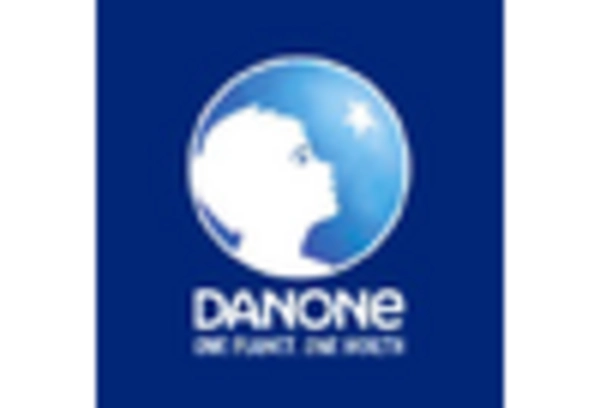
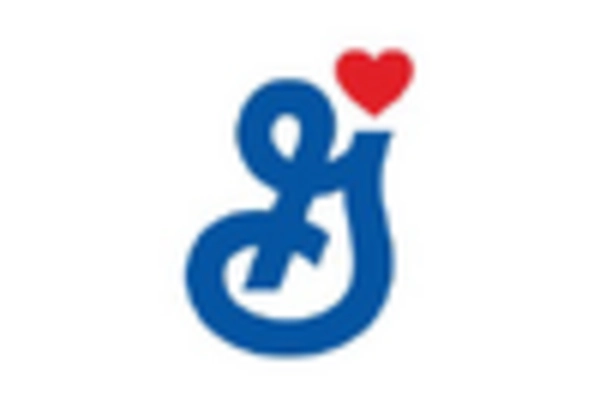
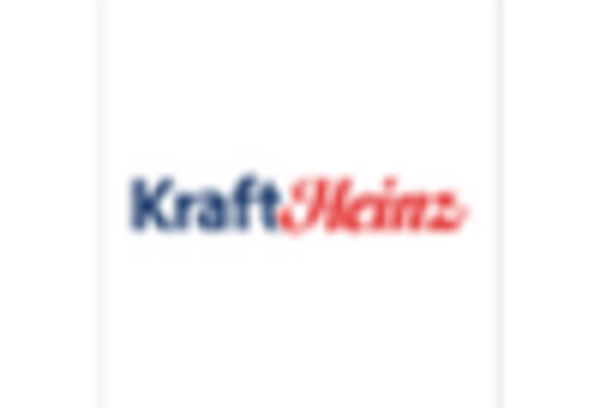

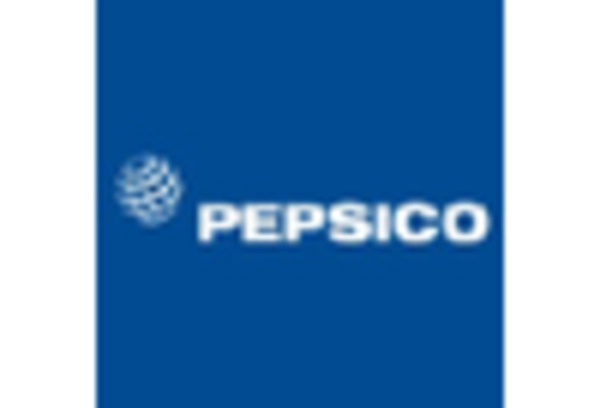

Leave a Comment